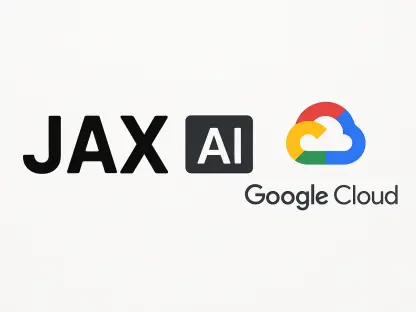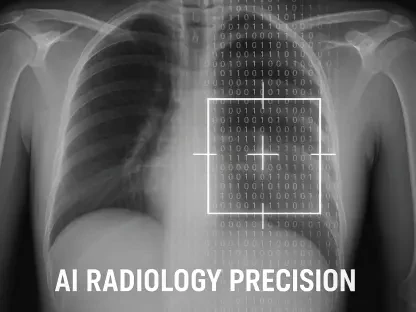Imagine tuning into your favorite music streaming platform and being greeted not just by a playlist, but by a charismatic host who offers trivia, personal anecdotes, and curated commentary between tracks, transforming a mundane listening session into an immersive journey. This is no longer a distant dream, as YouTube has unveiled an ambitious initiative that integrates artificial intelligence to redefine user engagement. Through a new program focused on testing cutting-edge AI features, the platform is rolling out AI-generated music hosts for its music streaming service, aiming to blend the charm of traditional radio DJs with modern technology. This development signals a shift in how digital media platforms can leverage AI to create more interactive and personalized experiences for users, while also raising questions about the balance between innovation and authenticity in entertainment.
Exploring the New Frontier of AI on YouTube
Unveiling the AI-Driven Music Host Feature
The introduction of AI music hosts marks a significant milestone in YouTube’s ongoing efforts to enhance user interaction within its music streaming ecosystem. These virtual hosts, powered by sophisticated algorithms, are designed to emulate the engaging style of radio DJs, offering listeners commentary, fun facts about artists, and contextual insights during playback. Available initially to a select group of Premium subscribers in the U.S., this feature aims to elevate the passive act of streaming into a dynamic experience that feels curated and personal. By integrating such technology, the platform seeks to stand out in a crowded market where user retention and engagement are paramount. This move also reflects a broader trend in the tech industry, where AI is increasingly used to add value to everyday digital interactions, pushing boundaries beyond mere functionality to create emotional connections with users through tailored content delivery.
Beyond the novelty of AI hosts, this feature represents a strategic effort to gather real-time feedback from users to refine the technology before a broader rollout. The controlled testing environment allows YouTube to monitor how these virtual personalities resonate with listeners, identifying what works and what might feel intrusive or artificial. Reports suggest that the platform is particularly focused on ensuring the hosts’ commentary feels natural and enhances the listening experience rather than disrupting it. This iterative process underscores a commitment to user-centric design, where technology adapts to human preferences rather than imposing a one-size-fits-all solution. As the feedback loop continues, there is potential for these AI hosts to evolve, perhaps even learning individual user tastes to offer hyper-personalized interactions that could redefine expectations for music streaming platforms in the competitive digital landscape.
Potential Expansion of AI Tools for Creators
Another intriguing aspect of this AI initiative is its potential to extend beyond music hosting into tools that empower content creators. Early indications suggest that future experiments could include AI-driven features for video editing, content ideation, and analytics, providing creators with resources to streamline their workflows. For instance, automated effects or doodle tools for short-form videos could reduce production time while maintaining high-quality output, enabling creators to focus on storytelling rather than technical hurdles. Such innovations could democratize content creation, allowing even novice users to produce polished material, thereby fostering a more diverse and vibrant creator community on the platform. This aligns with YouTube’s vision of blending human creativity with technological efficiency to push the boundaries of digital expression.
Moreover, the implications for creators extend to how AI might reshape audience engagement strategies. By leveraging data-driven insights, creators could receive AI-generated suggestions on content trends or optimal posting times, enhancing their ability to connect with viewers. This could be particularly transformative for smaller channels looking to grow their presence without the resources of larger entities. However, there remains a need to balance AI assistance with authentic creative input to ensure content retains a human touch. As these tools develop, the platform will likely face the challenge of maintaining a harmonious integration that supports rather than overshadows individual creativity. The ongoing testing phase will be crucial in determining how these features can best serve the diverse needs of the creator ecosystem while avoiding pitfalls like over-reliance on automated systems.
Challenges and Future Prospects of AI Integration
Addressing User Concerns with AI Music Hosts
While the introduction of AI music hosts has sparked excitement, it has also raised valid concerns among users about the potential disruption to their listening experience. Some early feedback indicates skepticism regarding whether virtual hosts might interrupt the natural flow of music enjoyment with unnecessary commentary or poorly timed interruptions. YouTube has acknowledged these concerns, emphasizing a commitment to adaptability by refining the feature based on user insights gathered during the testing phase. Striking the right balance between engagement and unobtrusiveness will be critical to ensuring that this innovation enhances rather than detracts from the core experience of streaming music. This focus on user satisfaction highlights the importance of iterative development in deploying AI technologies within entertainment platforms.
Additionally, there are broader implications to consider regarding how AI hosts might influence user behavior over time. If not carefully calibrated, there is a risk that the feature could feel formulaic or overly commercial, potentially alienating listeners who value authenticity in their media interactions. Ensuring diversity in the tone and style of AI commentary will be essential to cater to varied audience preferences. Furthermore, transparency about how user data informs these personalized interactions will be vital to maintaining trust. As the platform moves forward with this experiment, addressing these nuanced concerns will determine whether AI music hosts can truly become a beloved feature or remain a polarizing novelty. The lessons learned from this initial rollout could set a precedent for how similar technologies are integrated into other aspects of digital media.
Ethical Considerations and Global Expansion
As AI continues to shape digital platforms, ethical considerations such as data privacy and algorithmic bias emerge as critical challenges. With AI music hosts, questions arise about how user listening habits are analyzed to tailor commentary and whether such data usage is adequately disclosed. Ensuring that these systems operate fairly without perpetuating stereotypes or biases in content delivery is another hurdle that must be addressed. YouTube’s approach to these issues during the testing phase will likely influence broader industry standards for AI deployment in media, making transparency and accountability non-negotiable priorities. Tackling these ethical dimensions head-on will be essential to building user confidence in AI-driven features and fostering a sustainable model for innovation in the digital space.
Looking ahead, the prospect of global expansion for these AI experiments offers exciting possibilities alongside significant responsibilities. Diversifying the user base involved in testing could provide richer feedback, enabling the refinement of features to suit varied cultural contexts and preferences. This inclusivity could position YouTube as a leader in creating universally appealing AI tools that transcend regional boundaries. However, scaling such initiatives will require careful navigation of regulatory landscapes concerning data protection and AI ethics across different countries. Anticipated developments in monetization tools and live streaming applications also hint at a future where AI enhances every facet of content interaction. Reflecting on the journey so far, the groundwork laid through meticulous testing and user collaboration paves the way for meaningful advancements, setting a benchmark for how technology and human experience can coalesce in the ever-evolving world of digital media.









